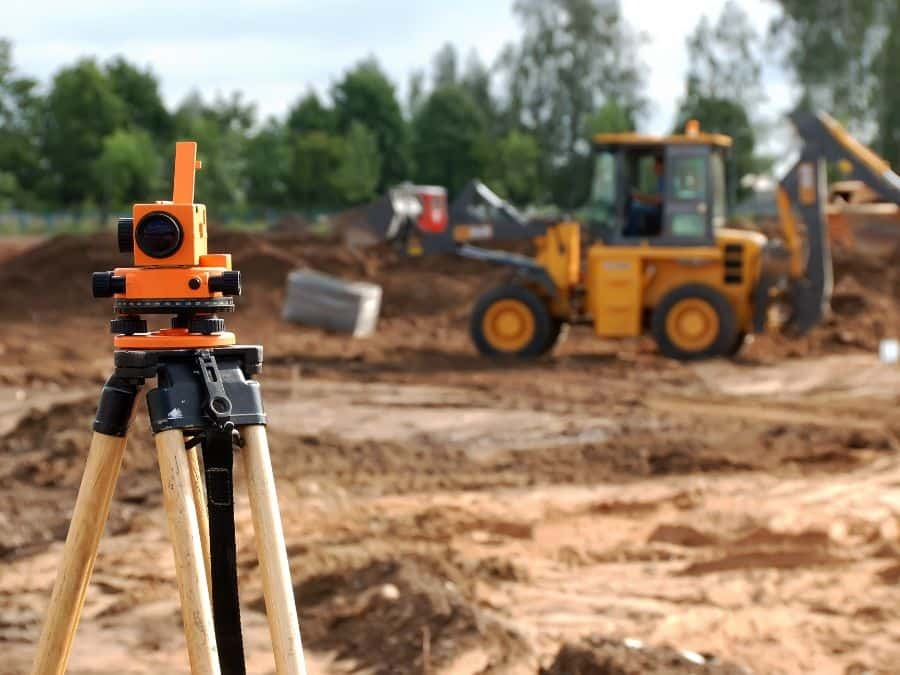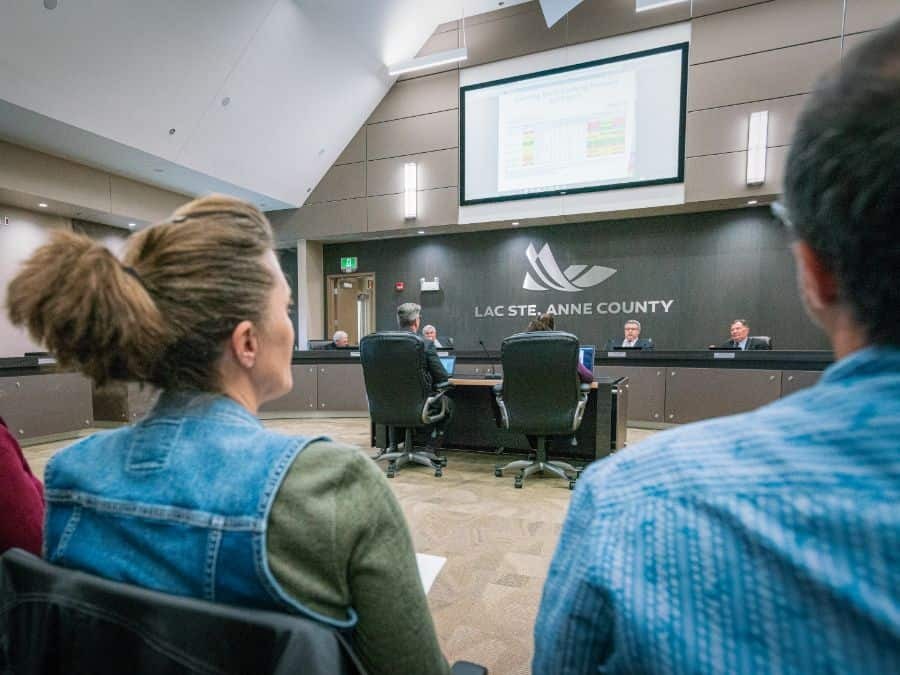
Planning Documents
The framework for regional development activities

Land use planning in Lac Ste. Anne County focuses on the overall impact that development can have on the community.
This requires coordination of development in ways that contribute to broader social, environmental and cultural goals.
Use this page to access the provincial and regional planning documents you need, and to understand their sequence and interconnected role.
Planning at the Provincial Level
Municipal Government Act
The Municipal Government Act (MGA) is the legislative framework under which all municipalities and municipal entities across the Province of Alberta operate.
The MGA provides the governance structure for cities, towns, villages, municipal districts, specialized municipalities, and other forms of local government. The current MGA is one of Alberta’s largest pieces of legislation, containing 21 parts and more than 700 sections.
The MGA contains three major “themes” or areas of focus:
- Governance
- Assessment and taxation
- Planning and development
Upper Athabasca Regional Plan
Status: Not Started
Developing the Upper Athabasca Regional Plan (UARP) is a phased approach that begins with gathering and assessing information, input and advice, followed by receiving feedback and drafting the regional plan, and ends with finalizing and approving the plan. Making and Amending Regional Plans offers more information about the planning process.
The regional plan sets out a new approach for managing our lands and natural resources to achieve our province's long-term environmental, economic and social goals. When a regional plan is approved by Cabinet, it becomes law.
Development of this plan will support land and natural resource management to achieve long-term economic, environmental and social goals.
Planning at the Municipal Level
Intermunicipal Development Plans
Intermunicipal development plans (IDPs) are statutory land use plans prepared in accordance with the Municipal Government Act (MGA) by two (or more) municipalities that share a common border. Created by neighbouring municipalities, an Intermunicipal Development Plan (IDP) is a high-level policy plan designed to foster cooperation and integrated development near municipal boundaries so that unnecessary costs and negative impacts for the municipalities are avoided.
The principles and objectives established in the IDP guide the growth of future development by identifying general locations for major land uses and servicing. In addition to its value as a blueprint for future growth, IDPs provide a framework for dispute resolution in the event that any disagreements arise between municipalities on development.
The IDPs listed below address a range of issues, opportunities and common interests between the partner municipalities. They will serve as an important decision making tool for Reeve & Council, County administrators, and other stakeholders.
Current Intermunicipal Development Plans
- LSAC-Barrhead County IDP — Signed March 1, 2021
- LSAC-Lac La Nonne IDP — Signed March 1, 2016
- LSAC-Parkland County IDP — Signed December 5, 2018
- LSAC-Town of Mayerthorpe IDP — Signed December 4, 2019
- LSAC-Town of Onoway IDP — Signed October 14, 2014
- LSAC-Village of Alberta Beach IDP — Signed March 12, 2016
Area Structure Plans
Area Structure Plans (ASPs) are documents that have been approved by Lac Ste. Anne County Council as bylaws. The County's ASPs provide a framework that articulates proposed land uses; population densities; sequence of development; general location of major roadways; public utilities in the area; and any additional requirements that the Council may require.
An ASP is the first step in obtaining planning approval for a new community. County planning staff work with stakeholders like community residents, landowners and developers to create these long-range documents.
For further information and assistance with ASPs, please contact the Planning & Development department.
Approved Area Structure Plans
- Alberta Beach ASP — Bylaw 22-2011
- Clearview Ridge ASP — Bylaw 27-2017
- Deep Creek Camping & Events ASP — Bylaw 30-2021
- Dornbusch ASP — Bylaw 31-2020
- Island View ASP — Bylaw 10-2013
- Lake Arnault RV Park ASP — Bylaw 14-2009 with Amending Bylaw 14-2009-01-21
- Lake Isle ASP — Bylaw 16-82 with Amending Bylaw 9-2001
- Majeau Lake RV Park ASP — Bylaw 13-2020
- Sandy Beach Estates ASP — Bylaw 05-2002
- Water's Edge ASP — Bylaw 16-2014
- Windmill Estates 17-2004
Outline Plan
Outline plans provide a more specific planning framework for an area included within an Area Structure Plan and conforms to the general principles and concepts established in the ASP.
Land Use Bylaw
The Municipal Government Act requires all municipalities in Alberta to adopt a land use bylaw. The land use bylaw must divide the municipality into districts (often called zones in other parts of Canada and the United States).
For each district, the uses of land permitted, or allowed only at the discretion of the development authority, must be described. The decision process must also be clearly outlined. That process must clearly determine how development permits are issued, and the number of dwellings permitted on a single parcel of land.
Sections of the County's Land Use Bylaw
- Land Use Bylaw — Table of Contents
- Land Use Bylaw — Introduction and Mandate
- Land Use Bylaw — Administrative Procedures
- Land Use Bylaw — Land Use Districts
- Land Use Bylaw — Development Regulations
- Land Use Bylaw — Definitions
- Land Use Bylaw — Maps
- Land Use Bylaw — Direct Control Districts (appendix a)
Policies
Municipal policies provide guidance for County Council and staff during the handling of local matters and procedures. In this spirit, all relevant policies that guide Lac Ste. Anne County Planning & Development protocols are linked here.
Subdivision
A subdivision authority is bound by the hierarchy of statutory plans when reviewing an application for a subdivision. If a subdivision authority is of the opinion that there may be a conflict or inconsistency between statutory plans, then it is bound by the hierarchy and relationship of plans in making its decision.
Landowners planning to subdivide are advised to first explore the Subdivision section of the County website.
Subdivision Applications
Development Permit
A development permit is a document that authorizes a proposed development to proceed (either with or without conditions) pursuant to the provisions of the Land Use Bylaw. The Bylaw divides the County into several land use districts (commonly called zones or zoning) and each of these districts have land uses and development regulations specific to them. Contact the County to determine what district you are in and whether your proposed development is permitted or discretionary.
A permitted development is deemed by Council to be appropriate for a given district. A discretionary development is up to the discretion of the County's development authority.
Development Permit Applications
Safety Code Permits and Standards
Lac Ste. Anne County is accredited for safety codes approval in all areas (building, electrical, gas/propane, plumbing and private sewage disposal) except fire, primary electrical and telecommunications lines. Obtaining all the Safety Code Permits (building, electrical, plumbing, gas, and private sewage permits) is a requirement of the Alberta Safety Codes Act. The Safety Codes Act, Alberta Building Codes and Standards, and other legislation regulates how buildings are designed, built, or renovated in order to protect the health and safety of the occupants.
The County issues electrical, gas and plumbing permits. Building permits and Private Sewage permits are issued through our contract agency Superior Safety Codes Inc. Permits are typically valid for one year, provided work is commenced within 90 days of permit issuance and the project is not suspended for more than 120 days. Time extensions may be granted upon written request.
Visit the Building Codes & Standards section of the County website to learn more about how applicable legislation regulates the design, construction and renovation of buildings in order to protect the health and safety of the occupants.
Additional Planning & Development Resources
Was this information helpful?
to Top



